
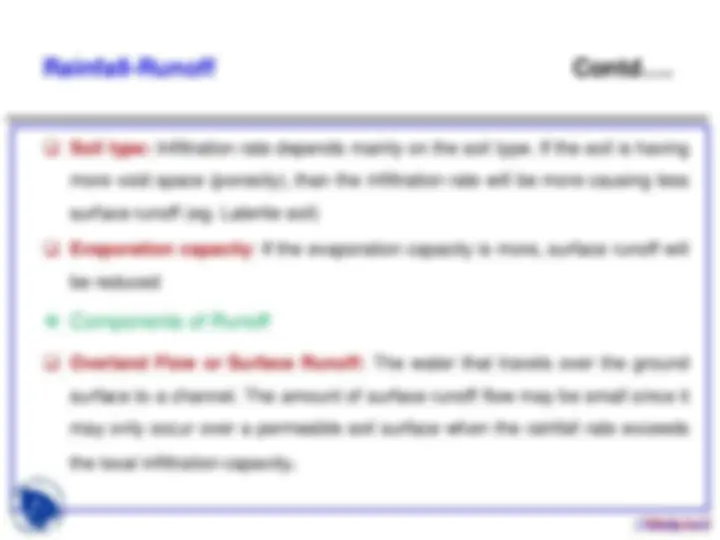
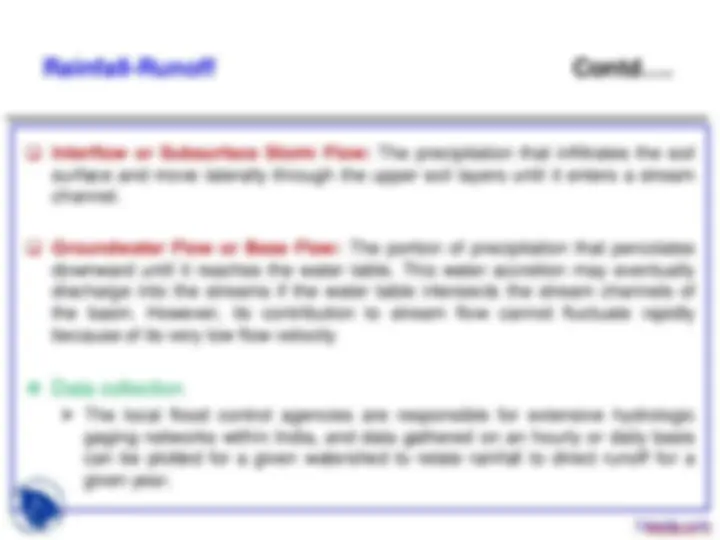
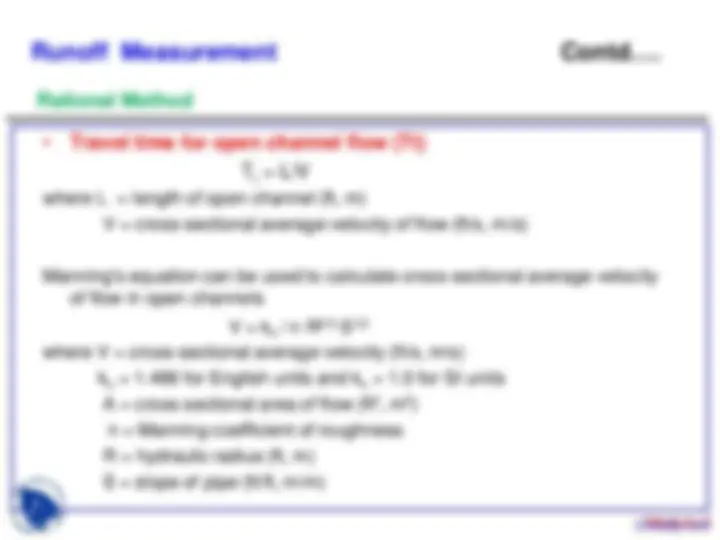
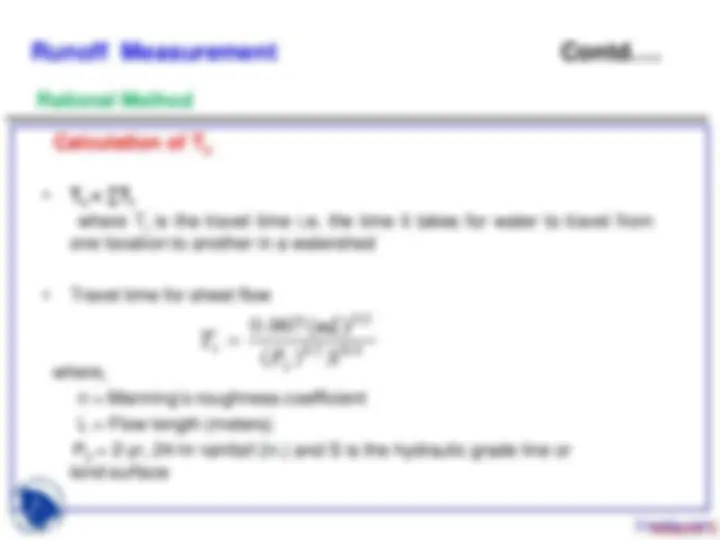
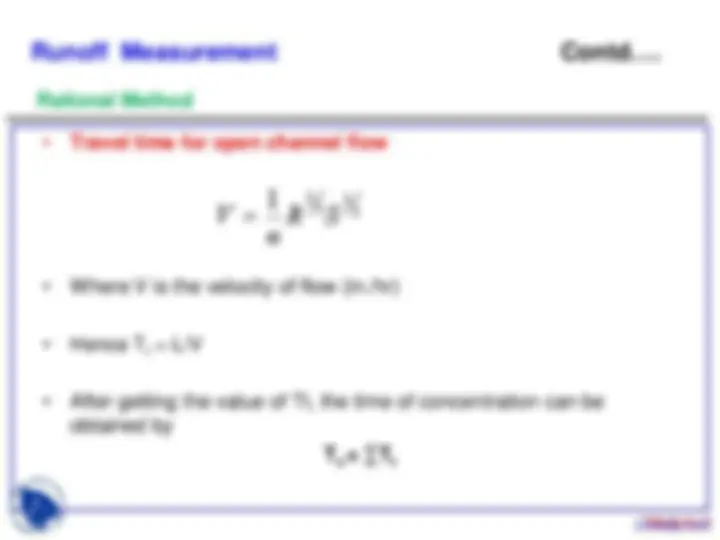
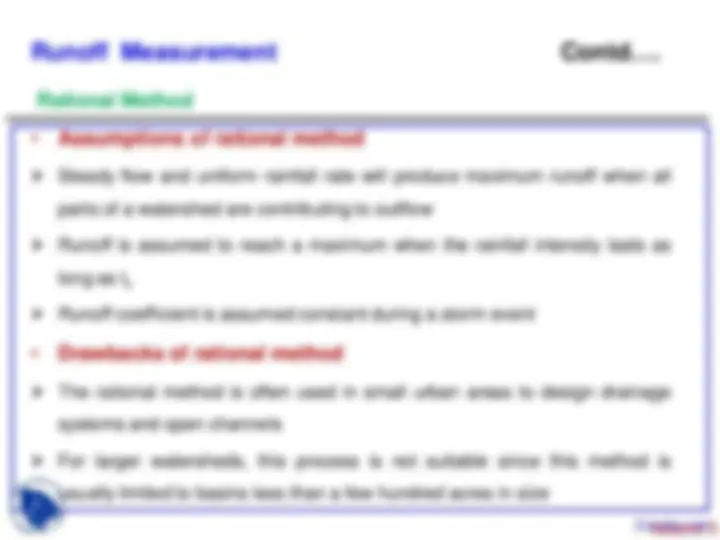


Study with the several resources on Docsity

Earn points by helping other students or get them with a premium plan


Prepare for your exams
Study with the several resources on Docsity

Earn points to download
Earn points by helping other students or get them with a premium plan
Community
Ask the community for help and clear up your study doubts
Discover the best universities in your country according to Docsity users
Free resources
Download our free guides on studying techniques, anxiety management strategies, and thesis advice from Docsity tutors
These are the Lecture Slides of Advanced Hydrology which includes Method of Matching Points, Method of Moments, Maximum Likelihood Method, Population Parameter, Sample Parameter, Estimation etc.Key important points are: Watershed, Rainfall-Runoff, Infiltration Rate, Surface Storage, Sheet Flow, Evaporation, Amount of Rainfall
Typology: Slides
1 / 10

This page cannot be seen from the preview
Don't miss anything!







Docsity.com
When rainfall exceeds the infiltration rate at the surface, excess water begins to accumulate as surface storage in small depressions. As depression storage begins to fill, overland flow or sheet flow may begin to occur and this flow is called as “Surface runoff”
capacity and land use
Amount of rainfall: The runoff is in direct proportion with the rainfall. i.e. as the rainfall increases, the chance of increase in runoff will also increases
Docsity.com Module 3
Interflow or Subsurface Storm Flow: The precipitation that infiltrates the soil surface and move laterally through the upper soil layers until it enters a stream channel.
Groundwater Flow or Base Flow: The portion of precipitation that percolates downward until it reaches the water table. This water accretion may eventually discharge into the streams if the water table intersects the stream channels of the basin. However, its contribution to stream flow cannot fluctuate rapidly because of its very low flow velocity
The local flood control agencies are responsible for extensive hydrologic gaging networks within India, and data gathered on an hourly or daily basis can be plotted for a given watershed to relate rainfall to direct runoff for a given year.
Module 3
Rainfall-Runoff Contd….
Docsity.com
where L = length of open channel (ft, m) V = cross-sectional average velocity of flow (ft/s, m/s)
Manning's equation can be used to calculate cross-sectional average velocity of flow in open channels
where V = cross-sectional average velocity (ft/s, m/s) k (^) n = 1.486 for English units and k (^) n = 1.0 for SI units A = cross sectional area of flow (ft^2 , m 2 ) n = Manning coefficient of roughness R = hydraulic radius (ft, m) S = slope of pipe (ft/ft, m/m)
Module 3
Runoff Measurement Contd….
V = k (^) n / n R2/3^ S1/
Docsity.com
Module 3
Runoff Measurement Contd….
Docsity.com
where, n = Manning’s roughness coefficient L = Flow length (meters) P 2 = 2-yr, 24-hr rainfall (in.) and S is the hydraulic grade line or land surface
Module 3
Runoff Measurement Contd….
Docsity.com
Steady flow and uniform rainfall rate will produce maximum runoff when all
parts of a watershed are contributing to outflow
Runoff is assumed to reach a maximum when the rainfall intensity lasts as
long as t (^) c
Runoff coefficient is assumed constant during a storm event
The rational method is often used in small urban areas to design drainage
systems and open channels
For larger watersheds, this process is not suitable since this method is
usually limited to basins less than a few hundred acres in size
Module 3
Runoff Measurement Contd….
Docsity.com